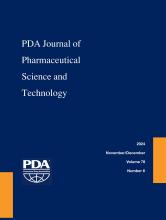Abstract
In pharmaceutical manufacturing, benefit is conferred in detection of specified microorganism (i.e., Burkholderia cepacia complex (BCC), E. coli, Pseudomonas aeruginosa, Salmonella enterica) not readily identified by culture-dependent methods. It's logical to test for the presence of “specified microorganism” using metagenomic analysis before culturing a “specified organism”, especially when the organism isn't easy to culture. We developed a metagenomic analysis during enrichment to identify specified organisms. The enriched bacterial community consisted predominantly of Bacillus spp. and Stenotrophomonas spp., each contributing about 97-99% to total taxon abundance in TSB and 1/10× TSB. The specified microorganisms that were observed were Clostridium spp., Burkholderia spp., and Staphylococcus spp. (0.04 - 0.07%) in TSB, otherwise Burkholderia spp., Pseudomonas spp., Salmonella spp., Staphylococcus spp. and Escherichia spp. (0.01 - 1.73%) in 1/10× TSB. PreQ0 biosynthesis (PWY-6703) and guanosine ribonucleotides de novo biosynthesis (PWY-7221) were the most abundant pathways in 1/10× TSB-24 h. BCC chiefly contributed to the toluene degradation (PWY-5180 and PWY-5182) pathways. Initial results demonstrate the potential of the metagenomic approach during enrichment in water-based environments. These results indicate that a metagenomic enrichment approach to evaluating water samples can be useful to monitor specified organisms over time, including oligotrophs such as BCC in 1/10× TSB.
- © PDA, Inc. 2024
PDA members receive access to all articles published in the current year and previous volume year. Institutional subscribers received access to all content. Log in below to receive access to this article if you are either of these.
If you are neither or you are a PDA member trying to access an article outside of your membership license, then you must purchase access to this article (below). If you do not have a username or password for JPST, you will be required to create an account prior to purchasing.
Full issue PDFs are for PDA members only.
Note to pda.org users
The PDA and PDA bookstore websites (www.pda.org and www.pda.org/bookstore) are separate websites from the PDA JPST website. When you first join PDA, your initial UserID and Password are sent to HighWirePress to create your PDA JPST account. Subsequent UserrID and Password changes required at the PDA websites will not pass on to PDA JPST and vice versa. If you forget your PDA JPST UserID and/or Password, you can request help to retrieve UserID and reset Password below.






